Rooftop gardens are a wonderful way to turn an urban space into a little slice of paradise. Not only does it allow space to grow beautiful flowers or tasty vegetables, but it has quite a few other benefits, as well. Constructing this type of garden is not without its challenges. There are many considerations to make during the planning and execution process.
Nonetheless, a rooftop garden serves some very valuable purposes, not the least of which is personal pleasure for the gardener. Let’s talk about the pros and cons of rooftop gardening, then, I have some tips to share that will make it easier to get started on your own!
Why Grow a Rooftop Garden?
First and foremost, gardening is wonderful for stress relief. Studies found that gardening helped with stress management during the COVID-19 shutdowns.. It also proved to be very helpful in boosting resilience and overall well-being. For those of us who are lifelong gardeners, this came as no surprise. Being outside and watching things grow has long been a favorite pastime of mine.
Gardening has some really wonderful physical advantages, as well. It’s shown to lower blood pressure and cholesterol, as well as increasing hand function and bone density. The fresh fruits and vegetables that you grow contain beneficial nutrients. It’s even shown to increase lifespan! Gardening, in general, is very good for your health.
Some other benefits of rooftop gardening are pretty darn amazing. Not only is this type of garden great for decreasing air pollution, it also makes more efficient use of rainwater. Trees and plants heat up more slowly than concrete and other building materials. Urban gardens lead to overall lowered temperatures in cities if enough people create them.
Lowering the temperature in your city might seem daunting, and it would certainly be for one person. But, did you know that a rooftop garden increases the energy efficiency of your home? It also acts as a sound barrier (think overhead planes, etc.), and provides a resting place for birds that are passing through. Rooftops stay out of reach for most garden pests, which certainly takes a lot of work out of maintaining it.
Drawbacks
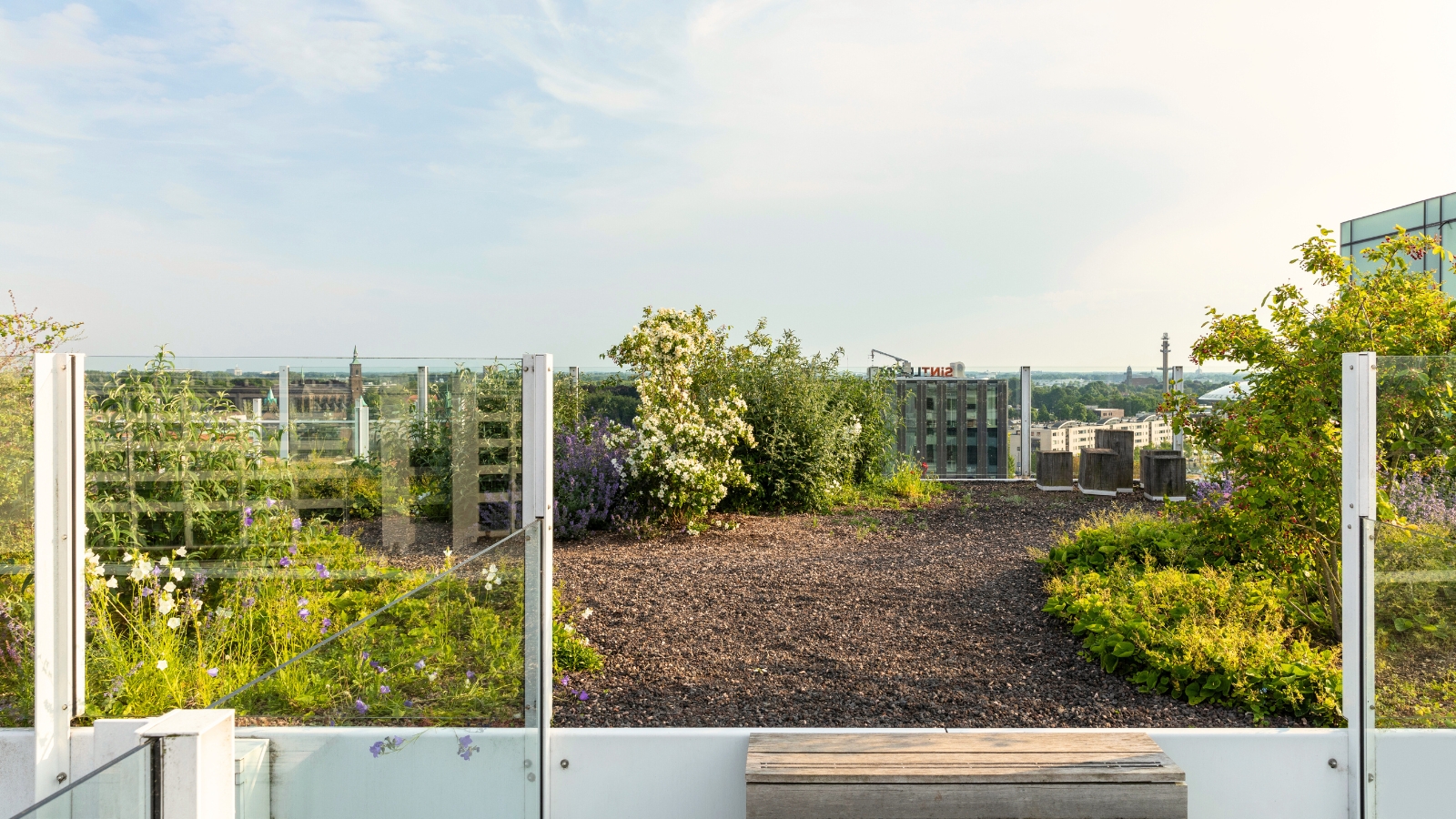
The cons are few, but significant. There are some important determinations to make before you get started. The most important consideration is the structural integrity of the building. Rooftop gardens can get pretty heavy, particularly when there is a lot of rainfall.
Before you set out on your project, make sure that your rooftop can support the added weight of a garden. Raised beds also make it significantly more difficult, and therefore costly, to make any repairs to the existing roof.
You will need a flat roof. Not many single-family homes have this type of roof, so that is another limitation. There are new and innovative terracing solutions that can turn a pitched roof into a flat one. They are costly, but the benefit may outweigh the financial risk. That is a personal decision.
Another consideration is the weather. Rooftop locations will expose your plants to some extreme weather conditions. Think intense sun, wind, and cold. These elements are more extreme on the roof as opposed to the ground where there are protective structures. These aspects will limit the type of plants you can grow.
Another consideration is access to pollinators. Some beneficial insects fly at a certain height for their entire lives. This helps them conserve energy and find their preferred food sources.
How to Make it Work For You
With these benefits and disadvantages in mind, if you’ve decided to go ahead with your project, congratulations! You’re going to derive a great amount of enjoyment from your new space. Let’s dig into some steps you can take to make this a successful project.
Make a Plan
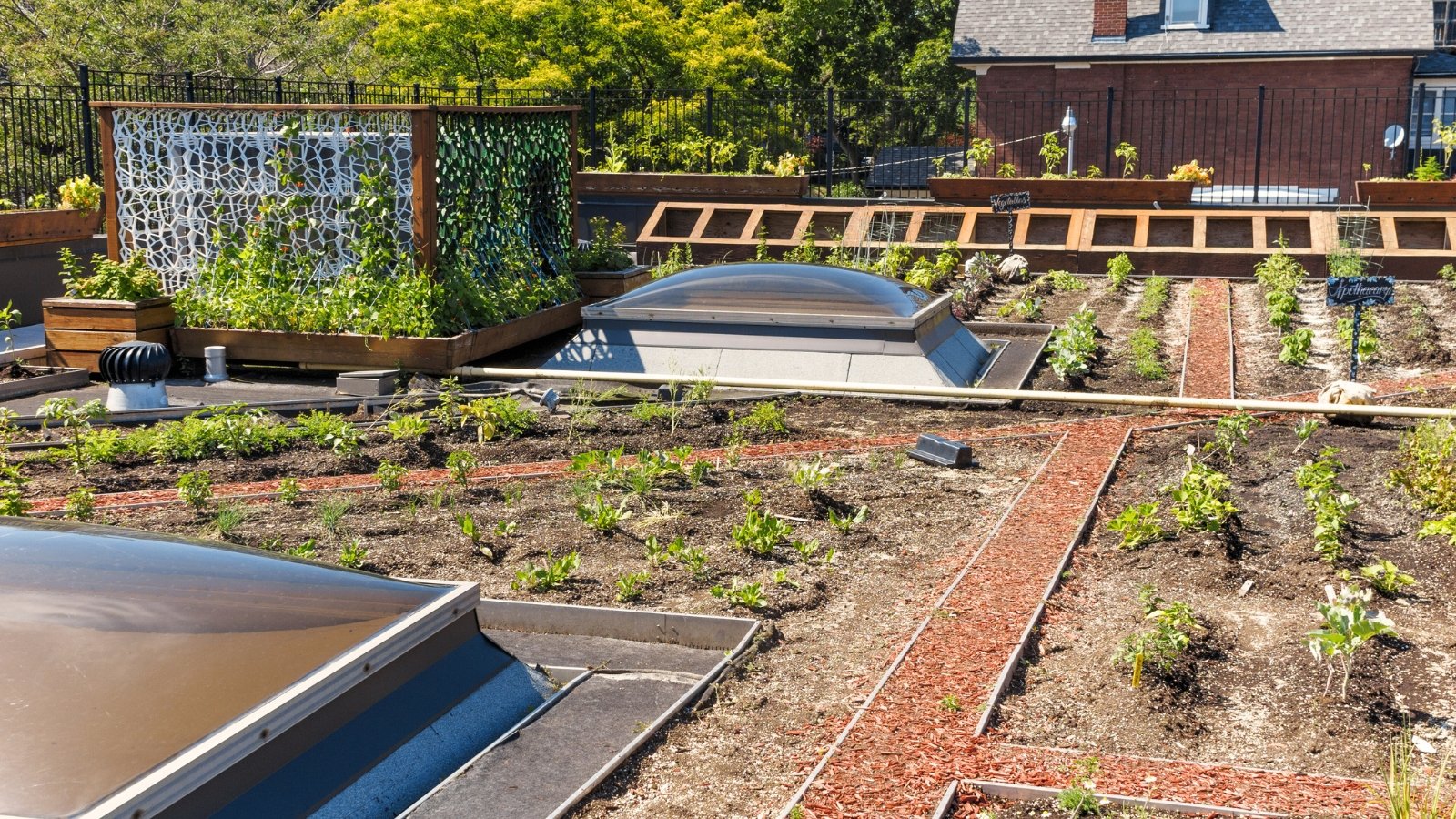
I always recommend creating a plan or map when embarking on a new project. No matter the space, a map can be extremely helpful in executing your final vision.
If you’re designing a roof for this purpose, well, I am envious. Unless your roof is specifically designed to support a garden, you’ll need to decide which parts of the roof can support which elements.
The first step should be to check your building codes. Make sure that you’re allowed to create the garden if you don’t own the building. Check things like homeowners’ association bylaws and general, local building codes.
Once you have this information, make a map of the space and designate which areas will be safe for beds. Equally important is to designate which areas are not good for this purpose. Drainage should be a primary consideration when designing your space.
If you want to take your map or plan a step further (and I encourage you to do so) determine which plants you will use.
Choose Your Plants with Care
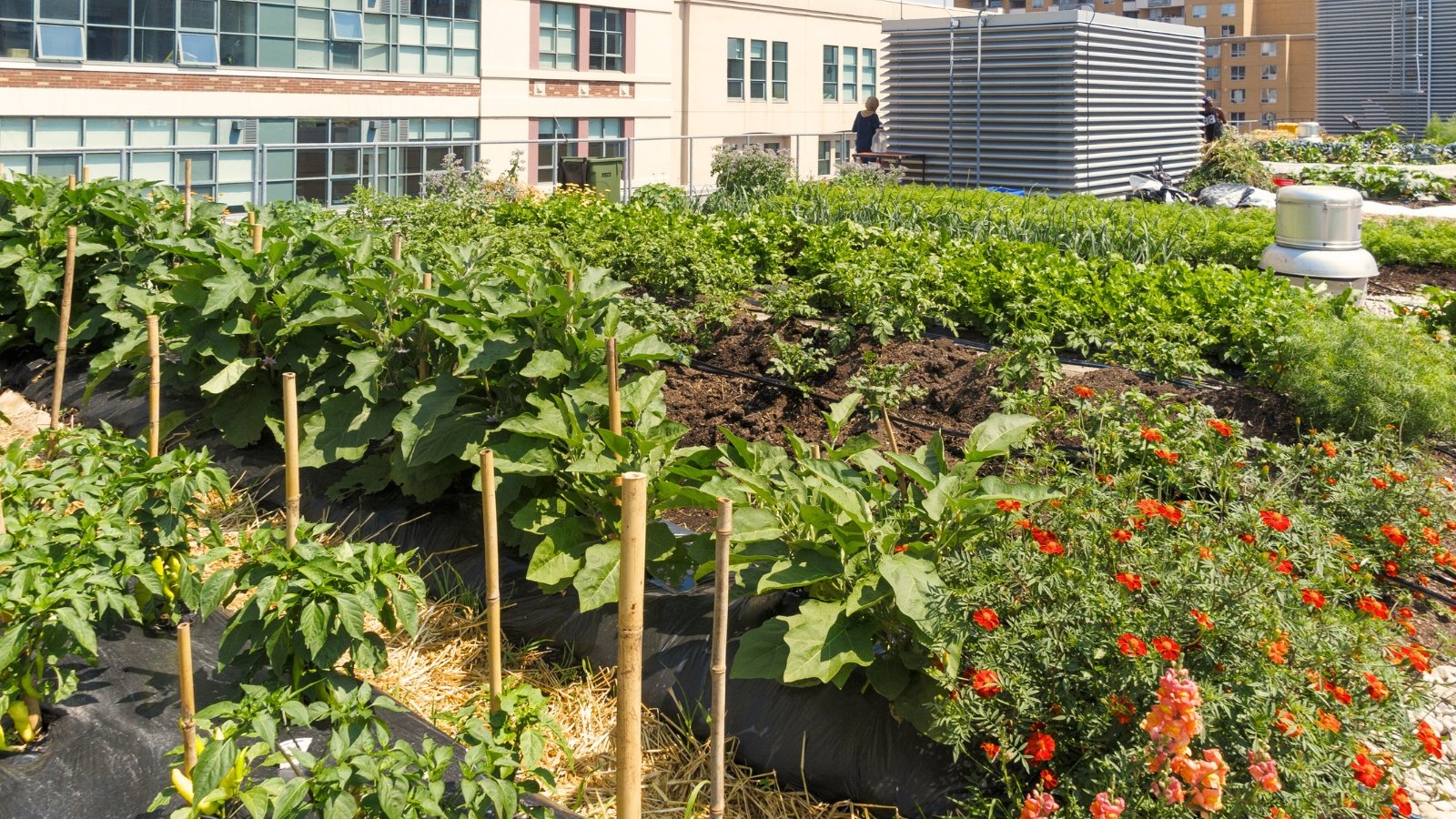
Choosing your plants for this project will be similar to any other. It’s extra important for rooftop locations, because you will end up doing a lot more work if you don’t. It’s vital to the survival of your plants that you understand the exposure levels of your space.
Consider the sun exposure of your roof. Are there taller buildings or trees nearby that create shade? If there are, make sure to choose some shade plants for those areas. Does your space receive full, blazing sunlight all day long? You’ll need to be vigilant about planting things that can tolerate a lot of light.
Rain and wind are other considerations that should come into play when deciding on plant varieties. Is your climate very dry, very wet, or somewhere in between? Know that plants on your rooftop will be in containers, so they will need more water than they would in the ground. In a dry climate, you’ll struggle with plants that need a lot of water. In general, drought-tolerant plants are best.
If you don’t already know, find out what growing zone you live in. This will help in selecting plants that will endure. Plants that are native to your area will be the easiest to maintain in many cases.
If you live in a very windy place, consider which plants can endure that, too. Not all plants enjoy a strong breeze. Plants with tender or brittle stems are not a good choice for windy locations. Consider constructing a windbreak to help buffer more vulnerable plants. You can do this using construction methods or with other, stronger plants that block the wind. Dense, evergreen shrubs are great for making a windbreak.
Finally, open-pollinated plants allow you to grow whether you’re at a height where pollinators can access them or not. If you want to grow delicious tomatoes, cucumbers, and other delicious summer veggies, choose those that don’t require pollination for production.
Set Up Irrigation
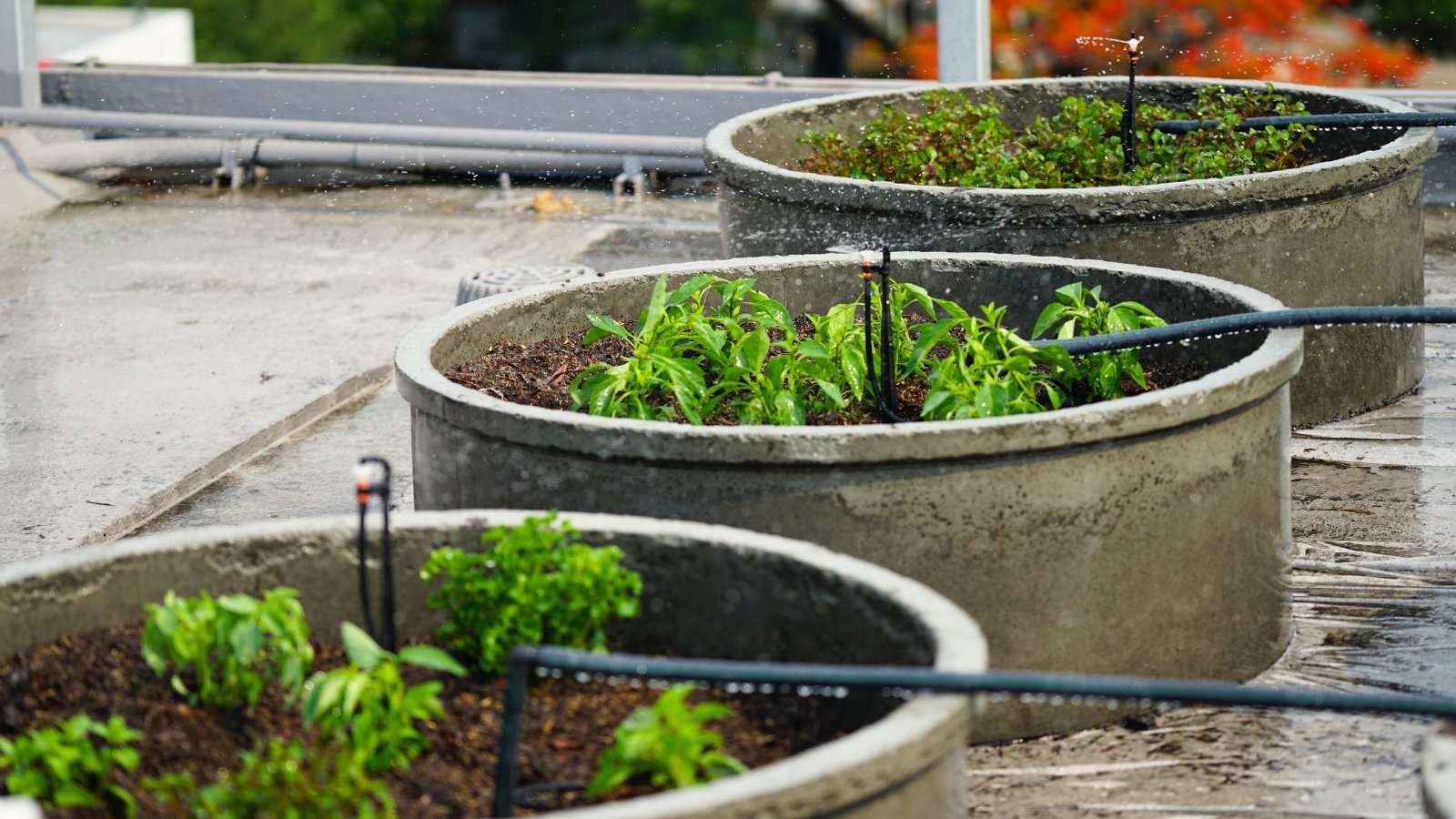
Unless you’re planting only the most drought-tolerant plants, irrigation is important. Make sure that you have a conveniently accessible way to water your plants. Your plants will likely need daily watering unless there’s an abundance of rain. A hose will work if you have the time and your space is on the smaller side.
A larger space will be best served by an irrigation system that you can manually set in motion, or that works automatically. Drip irrigation is the most efficient way to water on your roof. This uses the least amount of water to do that job. It keeps water from pooling in places it shouldn’t, and it delivers the water right where you need it, the roots.
A sprinkler that sprays water in the air will work, too, but you lose a lot of water through evaporation. It’s really not the most efficient or effective method. Button drippers, misting systems, or soaker hoses are the ideal way to water.
Address Any Drainage Issues
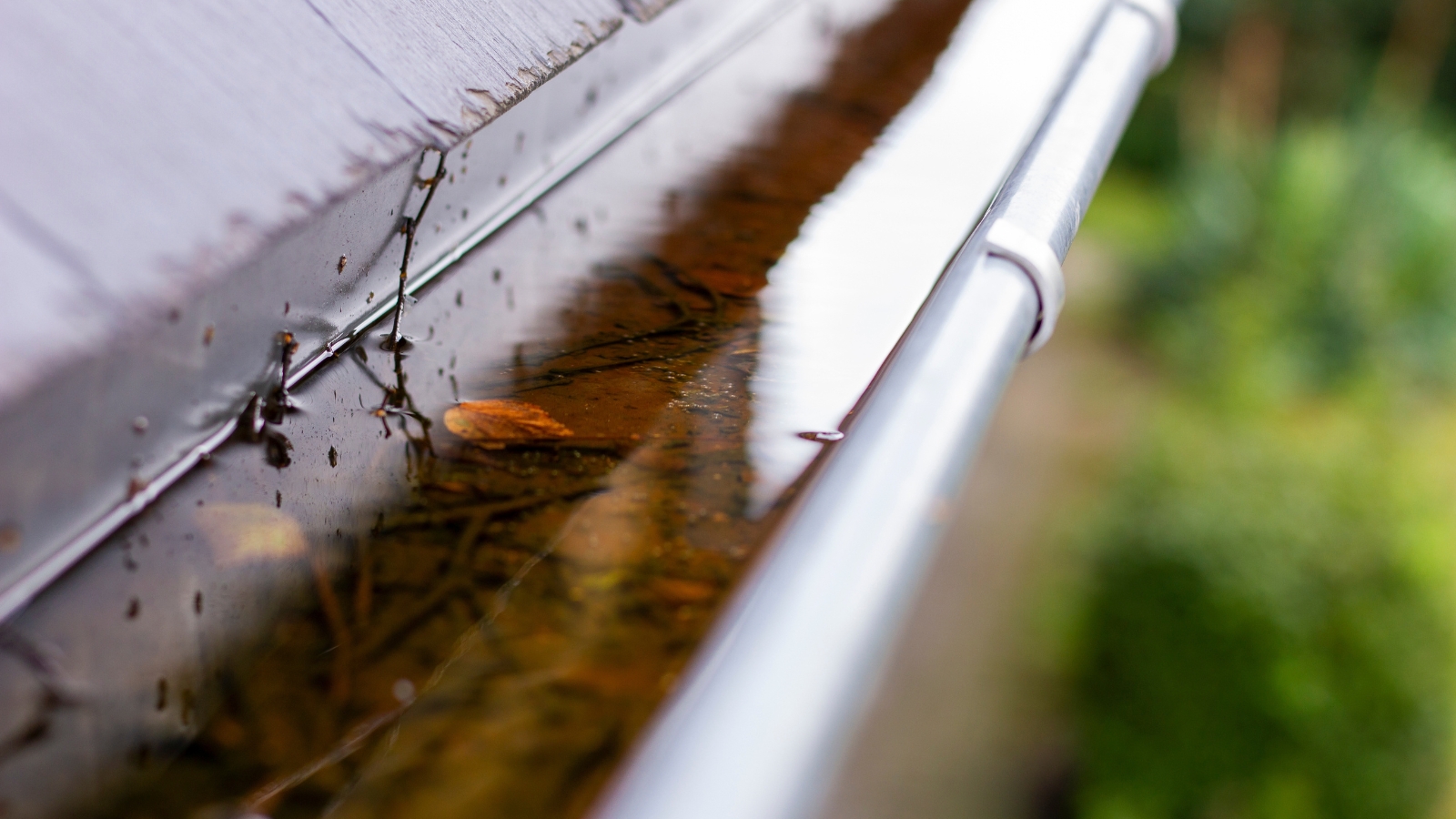
Proper drainage for your roof and your beds is important. Wet soil can get very heavy, not to mention it can kill your plants. But a roof that doesn’t have proper drainage can fall apart quickly by pooling water and heavy, waterlogged soil.
Use your newly installed irrigation system to determine what areas need work. Use materials that won’t rust or corrode over time, to construct your drainage system.
You can install drainage pipes strategically around your garden to collect water. Then, connect those pipes to gutters with downspouts to keep water from pooling on your roof, potentially causing long-term damage.
Choose and Construct Your Containers
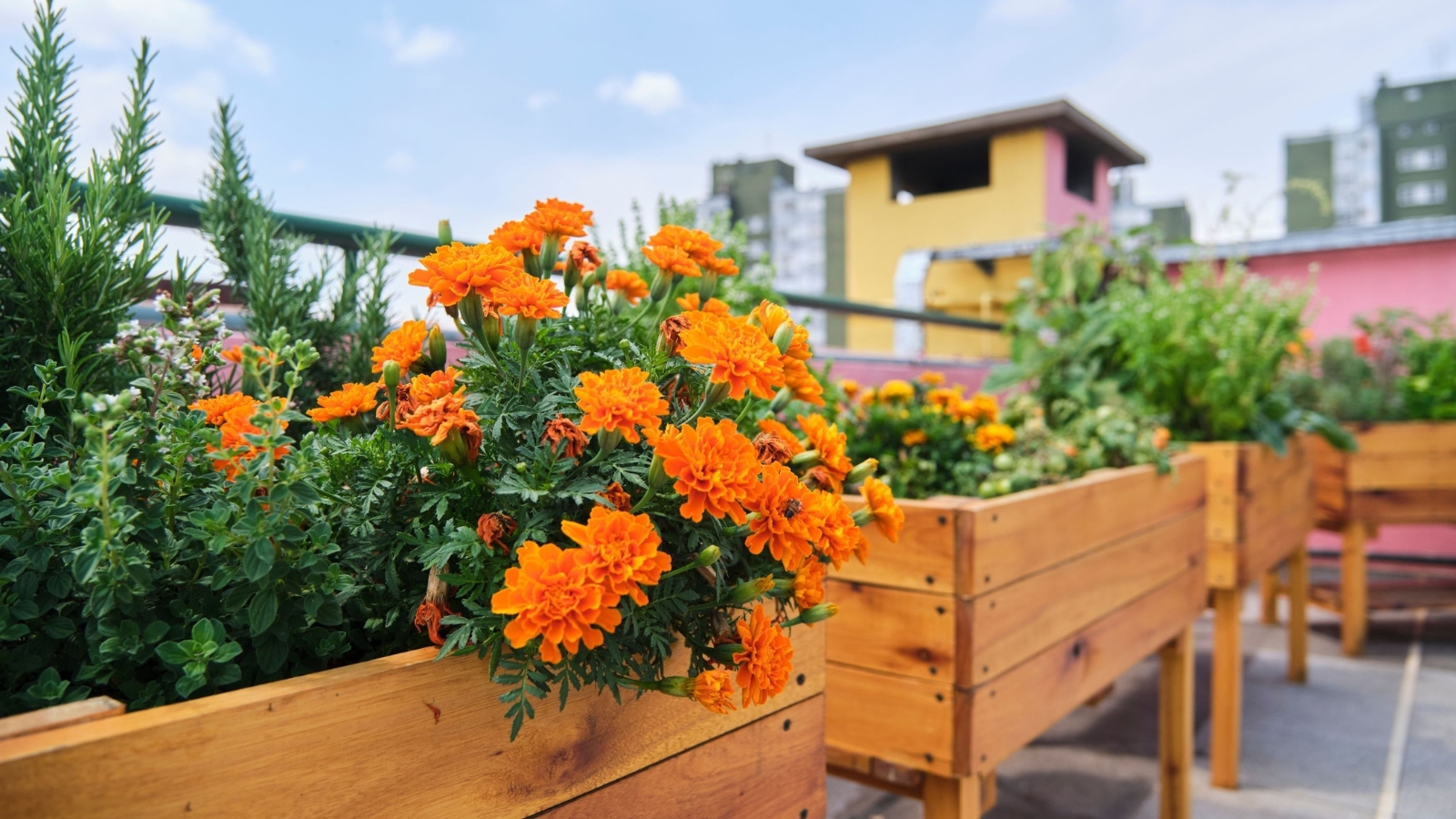
Rooftop gardens are, essentially, raised beds or container gardens. If you are one of the lucky few with a true green roof, you may be able to plant some things with shallow roots. For the most part, your garden will need to be in containers.
Choosing your containers is an important factor. My advice is to go with metal raised beds. These are very lightweight, so they add little to the overall load on your structure. In the long run, this type of bed holds up best to the elements and lasts a long time.
Wood beds are similarly lightweight, if a bit heavier. However, they don’t last as long, so they will make more work for you in the future. Both wood and metal beds are easy and fast to construct. If you like the look of wood beds, make sure to choose cedar beds that are well constructed, as they will last the longest.
Concrete or brick beds are ultimately the longest-lasting. If you own the building and plan to be permanently there, this is not a bad choice. The space needs to be pretty strong to support these heavy materials. Check back with the plan you made, and be certain that your choice of containers won’t exceed the limitations of the roof.
Concrete and brick or stone beds are more or less permanent structures, you can’t take them with you if you move. This is another advantage of metal beds if you are a renter. If you want this to be a lifelong space to grow your plants, those sturdier building materials are more appropriate.
You can plant small trees or shrubs in their own containers. Make sure that these containers are stable enough to stay standing in a storm or on a windy day. The last thing you want is to have a potted tree hurtling from your roof into your neighbor’s window. Containers that are wider than they are tall are best. Take into consideration how tall your plants will grow and how heavy they will be. Your containers should have enough weight to balance your larger plants and keep them standing.
Choose and Prepare Your Soil
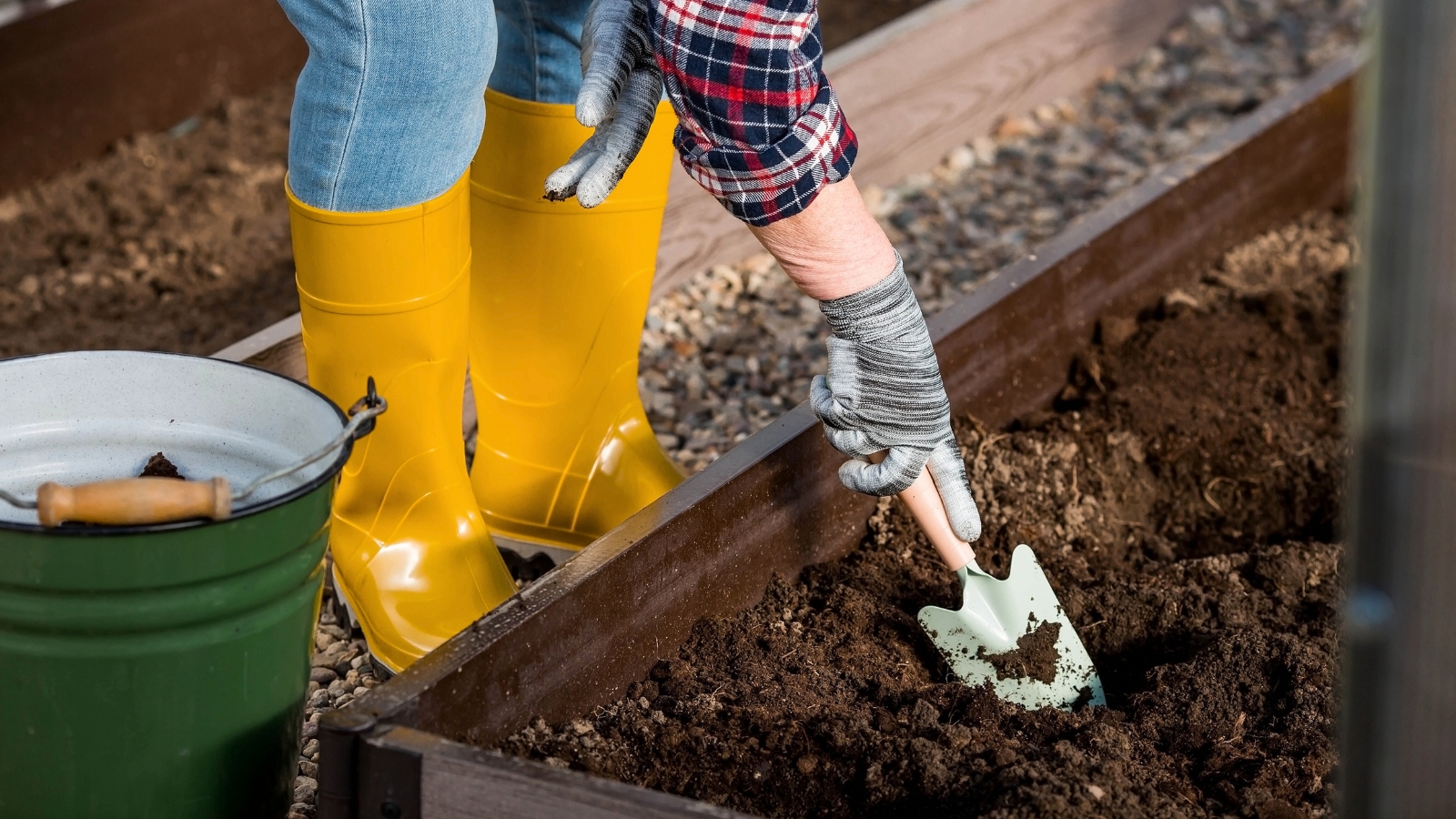
The three factors that should influence your soil selection are drainage, moisture retention, and weight. Those first two may seem like they don’t go well together. Soil that drains well doesn’t hold moisture. Or does it? Because of the amount of sun and heat exposure, the soil needs to hold some moisture. But because it needs to be lightweight, and you don’t want pools of mud on your roof, it needs to drain properly.
The solution is a mixture of different mediums. You don’t want to compromise on the nutrient level of your soil. So, start with some nutrient-dense compost. Compost holds moisture, but it’s also quite heavy and dense and compacts easily. You’ll want to mix in some lightweight additions like coconut coir, coarse sand, and perlite. These materials loosen things up, allowing for better drainage.
If you are using taller beds, fill the bottom half with other lightweight materials. Wood chips work well and break down over time. Coco coir and other peat-based materials work in this way, as well. Incorporating materials to assist with drainage in your beds will benefit the structural integrity of your roof. Gravel, sand, and clay pellets are all great options. If you’re layering the bottom with wood chips, ensure you have enough straight growing media to support the whole root system of your plants above.
Build Storage Space
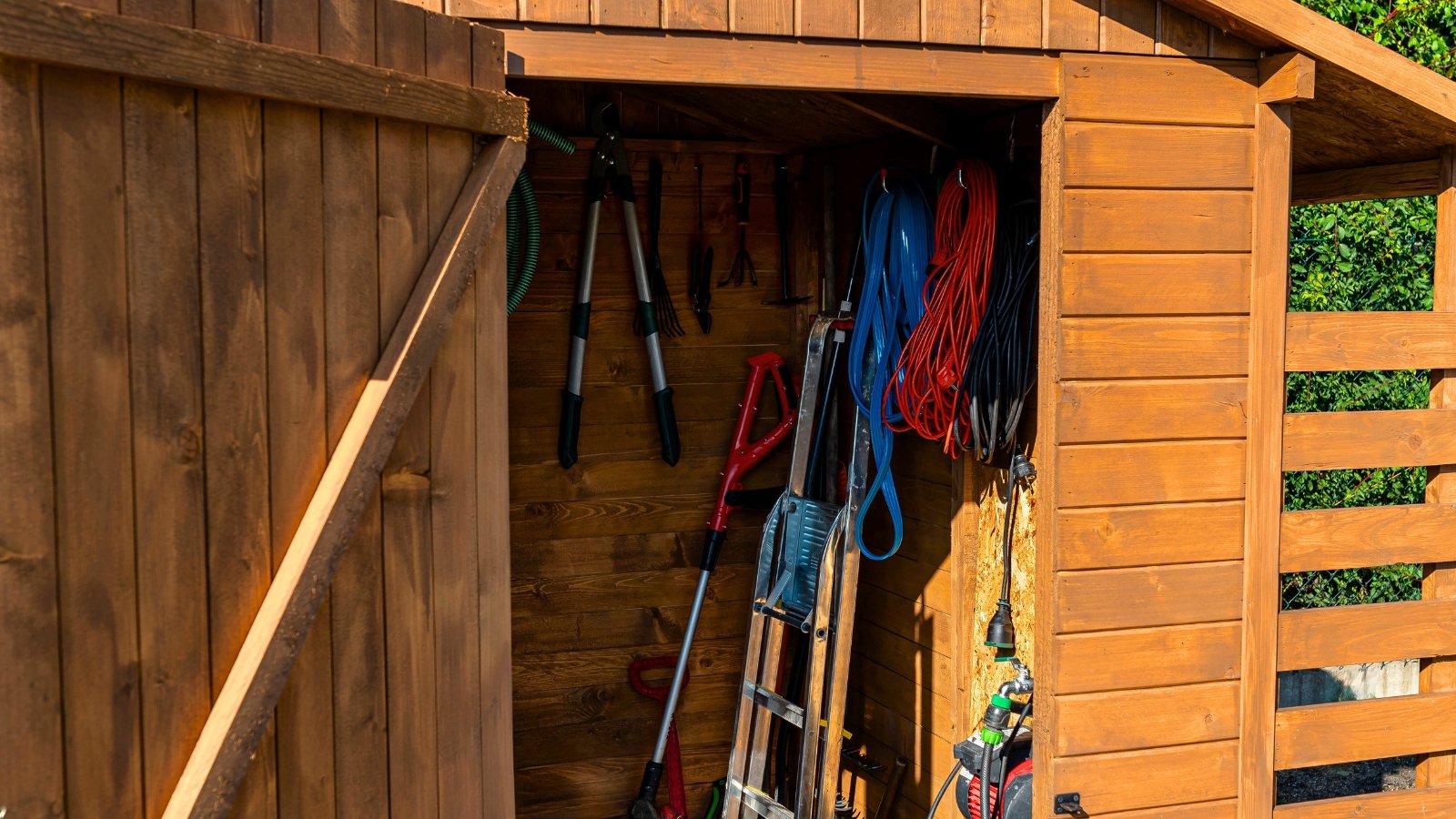
This step, technically, is optional. But, I strongly recommend building or installing some type of storage that is easily accessible. You could go big with this, by installing a shed. However, you would have to strap it down pretty well to keep it secure. A watertight storage bench or box is a good idea because they have a low center of gravity.
Make sure that your storage solution will stand up well to the elements. As with your containers, metal will be the most durable material in withstanding the wind, sun, and rain. It is usually lighter weight than wood, as well. Heavy-duty plastic would also be appropriate for this purpose.
The reason for this is simple. You’ll want your gardening tools available to you while you’re up there. It will save a lot of time and aggravation if you have the bulk of what you need to tend to your plants already in that space. It’s a great idea to acquire a second set of tools to leave in this space. Carrying the same tools back and forth will become tiring.
Consider Seating
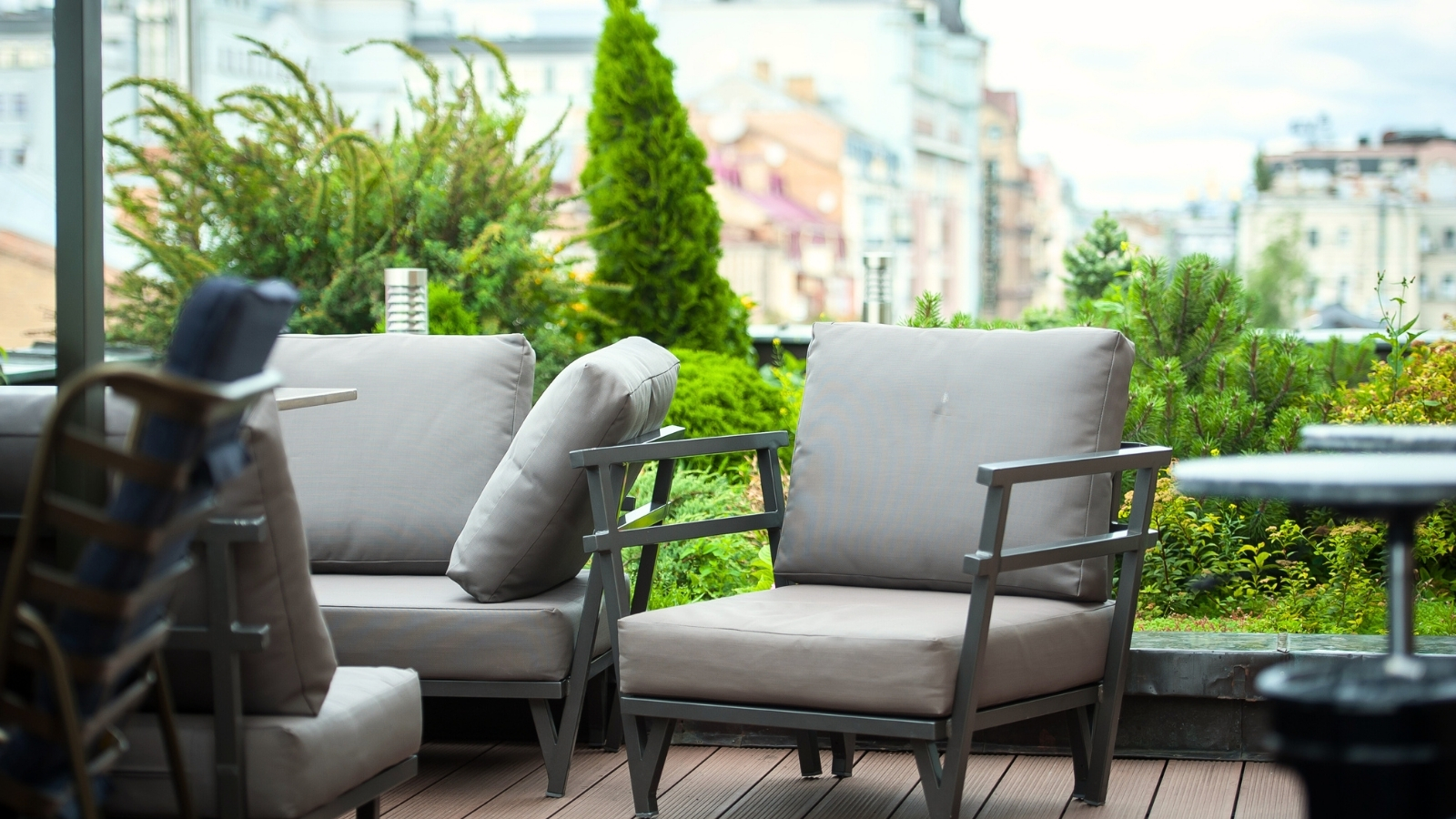
With all the effort you’re putting in, you might want to create a comfortable place to sit and enjoy it. A rooftop garden is an incredible place to watch the sun rise or set. If you’re a morning person, think about a spot to sit and have your coffee. Night owl? A cozy spot to sit with friends and do a bit of stargazing.
As with your storage solution, consider how the weather will affect your other furnishings. The constant sun is hard on most types of fabric. Umbrellas and shades should be easy to take down and store when they are not in use. Otherwise, a strong wind could send them flying. Low seating made from weatherproof materials will hold up the best and stay put.
If you want to use sunshades and can’t anchor them to permanent structures, make sure that any posts you install are stable and sturdy, as you did when choosing containers for taller plants. Nothing about this garden should be top-heavy.
The Fun Part
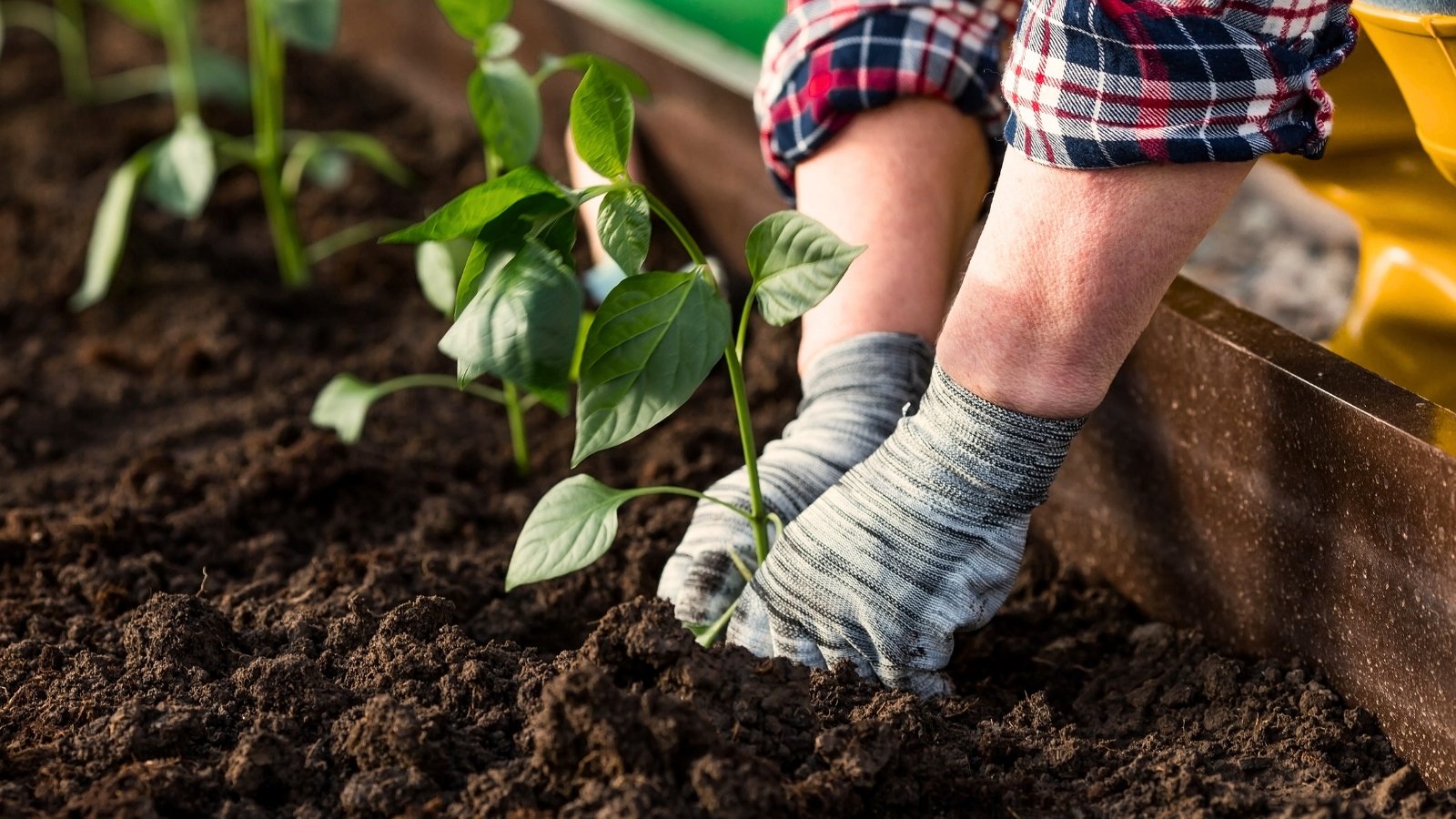
Once your garden is planned, constructed, and prepped for planting, then comes the fun part. Time to go have some fun at the nursery and then dig in the dirt. Your plan should include the type of plants that you intend to grow in different spaces.
One great thing about some rooftop gardens is that their height makes them less accessible to pests and diseases. You won’t have to worry about planting things near each other that attract the same insects or ailments. The double-edged sword here is a lack of pollinators too.
Do consider nutrient and water needs when you create neighbors. Things like fertilizing and watering will be much easier this way. Not all plants can tolerate the same amount of fertilizer, and some plants will rot in situations that others thrive in. Consult a companion planting guide for the best combinations.
Enjoy this time of digging in the dirt and nurturing your young plants. It is a joy to watch a newly planted garden take on a personality of its own. To see which plants thrive and work well in their locations. It’s equally important to recognize plants that are not thriving and move them to a better spot.
Maintenance
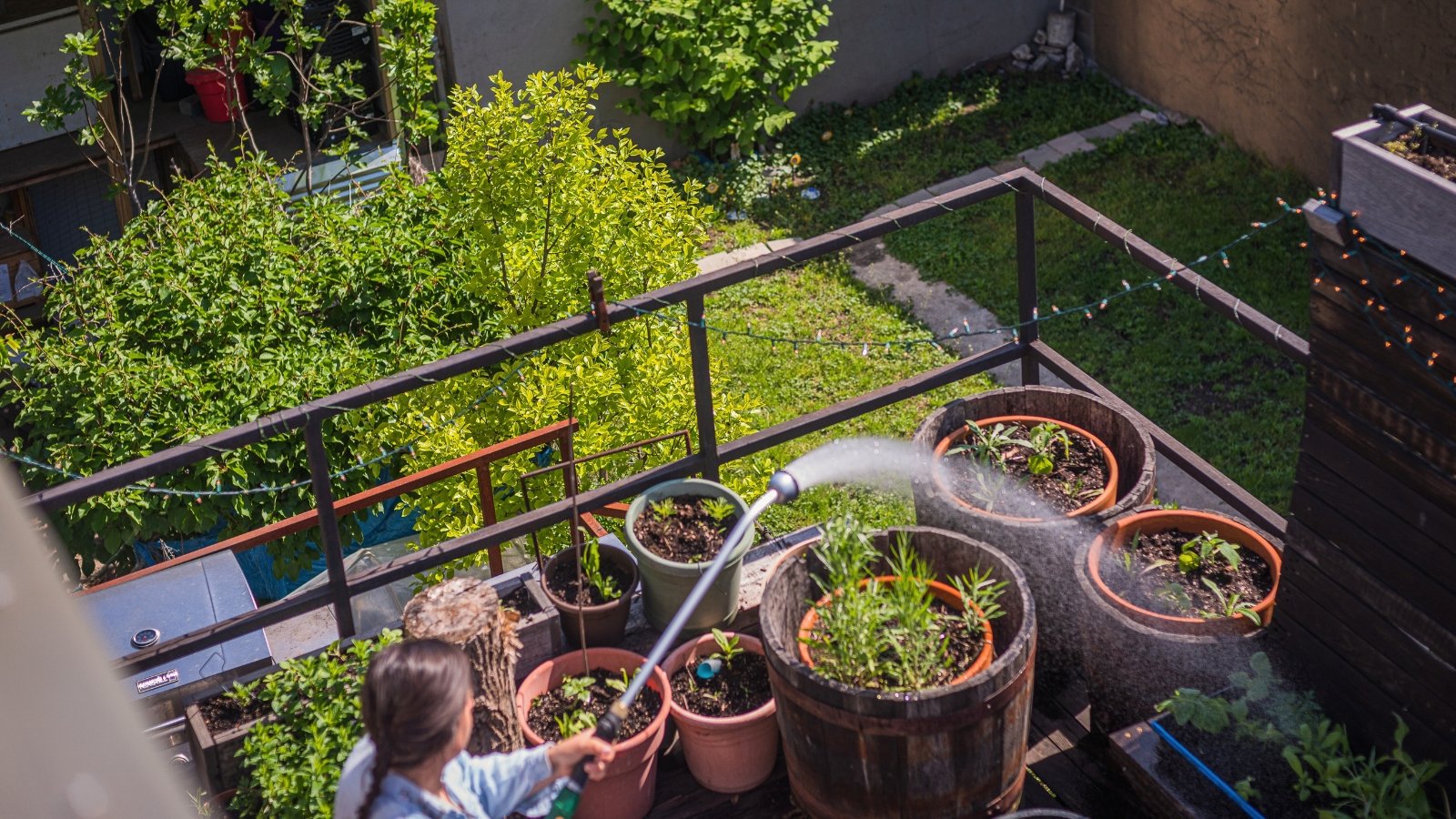
Maintenance is what keeps your plants happy. The more drought-tolerant and native plants you include, the lower maintenance your garden will be. Because rooftops are somewhat out of the way, it’s extra important to make sure you visit it often and care for those plants.
This is a garden that will need more water than most. Large amounts of sun and wind exposure will dry them out faster. In most cases, you will need to water daily. In some cases, you may need to water twice a day, especially in the hottest months of summer. This is why an irrigation system is so vital to this type of project. It will save you hours of time and conserve water.
Fertilize this garden as you would any other. If you plant your beds with fertilizing in mind, it will be easier to make sure that each plant has its needs met at the right time.
You should also deadhead and prune your plants. These are all good practices that will ensure a long, healthy life for your rooftop plants. Harvest often to get the best yields.
Final Thoughts
Most of all, enjoy your garden. Building one is a lot of work, but spending time there can bring hours of peaceful work and enjoyment. Your rooftop garden is a wonderful space to recharge, restore, and contribute to an overall healthier and more sustainable environment.





